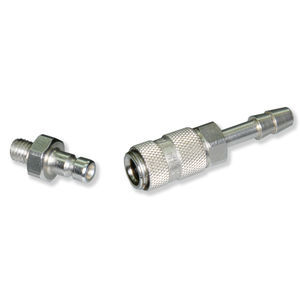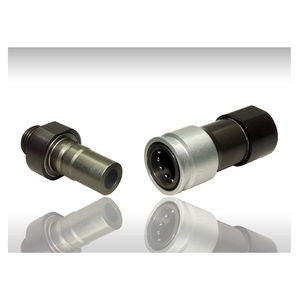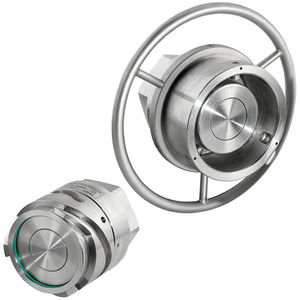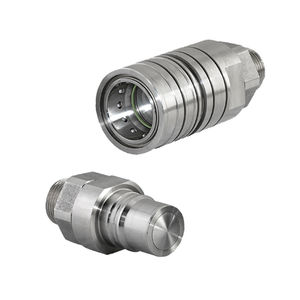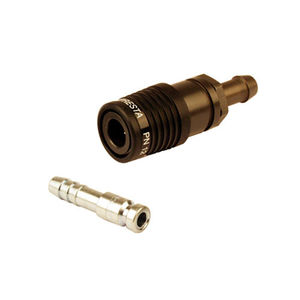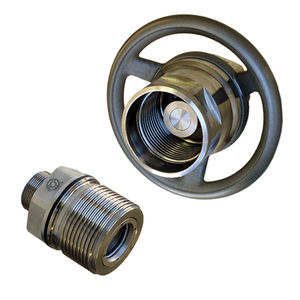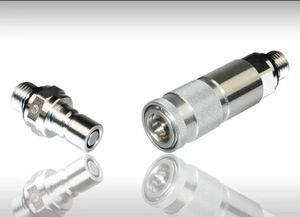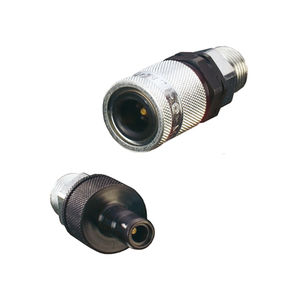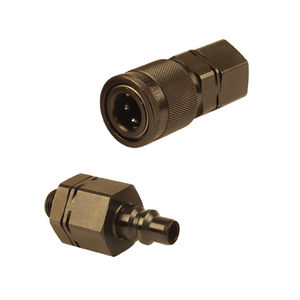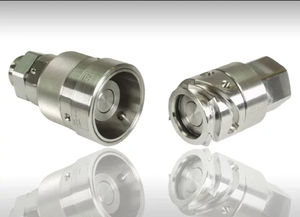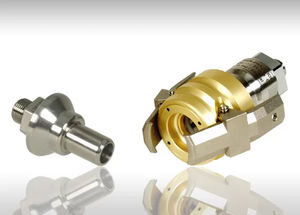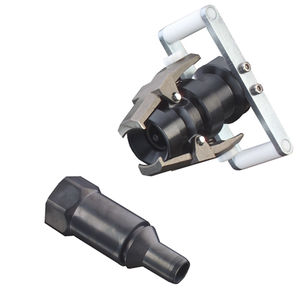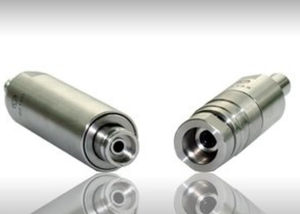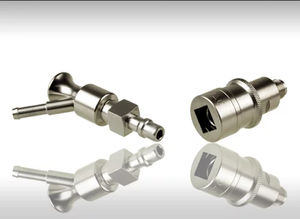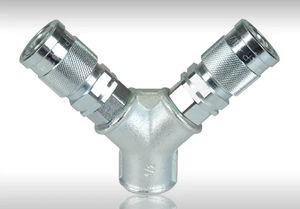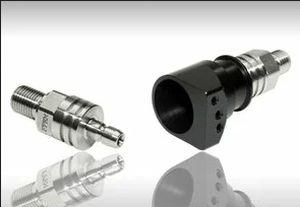
- Hydraulics - Pneumatics
- Pipe, Tube and Fitting
- Hydraulic fitting
- WALTHER-PRÄZISION

- Company
- Products
- Catalogs
- News & Trends
- Exhibitions
Quick coupling RFID hydraulicISOstandard
Add to favorites
Compare this product
Characteristics
- Applications
- hydraulic
- Attachment
- quick
- Norms
- ISO
- Other characteristics
- standard, test, RFID
Description
RFID technology can be used for many complex, demanding and safety-relevant applications. It ensures a reliable control and electronically-documented monitoring of (re)filling processes with different fluids and / or different lines.
Applications:
Hose stations, conveyance of fluids, test stands, etc.
Description:
The RFID antenna in a permanently installed coupling half (fixed half) unmistakably identifies the RFID transponder (see figure 1) placed in the other coupling half (free half) after completed coupling. When connected the transponder of the free half transmits all important information (including the transponder data memory) contactless to the fixed half. The coupling’s location can be clearly identified by the RFID transponder coding. The control is enabled to automatically start subsequent process steps.
Advantages of RFID-Technology:
Safety:
by the active integration of the coupling side in the system control the flow is only released after a correct connection was verified.
Documentation:
connection information, e.g. of hose stations, are available by real-time monitoring and can also be stored on the transponder.
Service:
data on coupling frequency, connection time as well as
on other services can be used.
Additional System Options:
Mechanical coding:
allows fast and unmistakable connection.
Technical Data RFID:
– RFID System on basis 13,56 MHz
– passive RFID transponder generally available with user memory
– standard ISO 15689
Catalogs
RFID-Technik
4 Pages
Technical Catalogue
204 Pages
Related Searches
*Prices are pre-tax. They exclude delivery charges and customs duties and do not include additional charges for installation or activation options. Prices are indicative only and may vary by country, with changes to the cost of raw materials and exchange rates.












